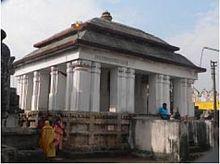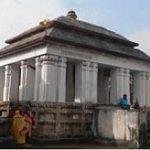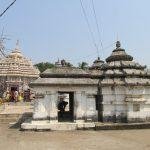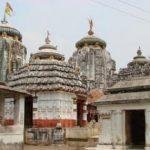Kapilesvara Siva Temple, Bhubaneswar, Odisha
| Date built: | 14th century A.D. |
|---|---|
| Deity: | – |
| Architectural style: | Kalingan Style |
| Major festivals | – |
| Locale: | – |
| District:: | Bhubaneswar |
| Address: | – |
| Phone | – |
The Kapilesvara Siva temple is a Hindu temple dedicated to Lord Siva located in the south western outskirt of the village Kapilesvara, Old Town, Bhubaneswar, Orissa, India. It is located at the end of Kapilesvara road leading from Lingaraj temple to Kapilesvara Village. The presiding deity is a Siva-lingam at the center of a circular yonipitha inside the sanctum. It is a living temple, facing towards east and maintained by Kapilesvara Temple Trust Board. The temple is situated within the precinct along with 33 other monuments. The precinct is located on the northern embankment of Manikarnika tank over an area of 44.00 square metres.
Architecture
The entire temple was renovated at a later date with the building materials of the original one. The temple has a vimana (shrine), jagamohana, nata-mandira and bhoga-Mandapa. The vimana is in rekha order, jagamohana is pidha and nata-mandira and bhoga mandapa (hall) are flat roofed and of later constructions. The vimana (shrine) measuring 11.40 metres in height has usual bada, gandi and mastaka. The lower potala has five tiers and the upper poatala has four tiers in pyramidal elevation.
The parsvadevata (other deities) niches located on the raha paga of the tala jangha on the three sides of north, west and south and enshrine Parvati, Kartikeya and Ganesha respectively. The Talagarvika below the niche is decorated with a series of Khakhara mundis flanked by naga nagi pilasters. The niche is flanked by two pilasters that are carved with Kirtimukha at the center of the pilaster and the niche is crowned by Urdhagarvika. The western raha niche houses four armed Kartikeya standing in tribhanga over a lotus pedestal with his upper left hand is holding a cattle drum, the upper right hand is holding a trident and while the major left hand is holding a cock and right hand is in varadamudra. The image is crowned by jatamukuta and at the corners there are flying Vidyadharas and diminutive male worshipers at the base of the pedestal. The northern raha niche houses a four-armed Parvati standing over a lotus pedestal. The image is partly damaged. She is holding lotus in her major left hand and naga pasa in the uplifted left hand, major right hand is in varada mudra and the uplifted right hand is broken. Flanked by two diminutive female attendants holding sakti, the image has jatamukuta. The southern raha niche enshrines a four-armed Ganesha standing in tribhanga over a pedestal. His right hand is holding an akhyamala (rosary), left hand a Parasu while the uplifted left hand is holding a Modaka patra the uplifted right hand holds a tusk. The image has a Jatamukuta.
At the Lalatabimba there is a Gajalakshmi seated in lalitasana over a lotus pedestal. She holds lotus in her both hands; above the lotus two elephants are pouring water over the deity. At the base of the doorjambs and beneath the dvara sakhas there are two pidha mundi niches that house Saivate dvarapalas along with river goddesses of the Ganges and Yamuna mounted over their respective mounts.
Legend / Local stories
The dominant feature of the temple is the 60 foot high temple and its adjacent pond, surrounded by stone steps. The temple is a satellite of the main temple in Bhubaneswar, the Lingaraj temple. Both these temples, like other temples in India are centres of social, political, and educatioal activities. Until the middle of the 20th century, the temple dominated the economic, political and ritual life of the place. The temple was built during 14th Century A.D. during Suryavamsi rule of Kapilendra Deva. Inscription of Kapilendra deva and other architectural sculptural fragments suggest the original temple could be earlier than 11th Century A.D.
Photo Gallery
How to Reach:
Contact Details
Official Address




